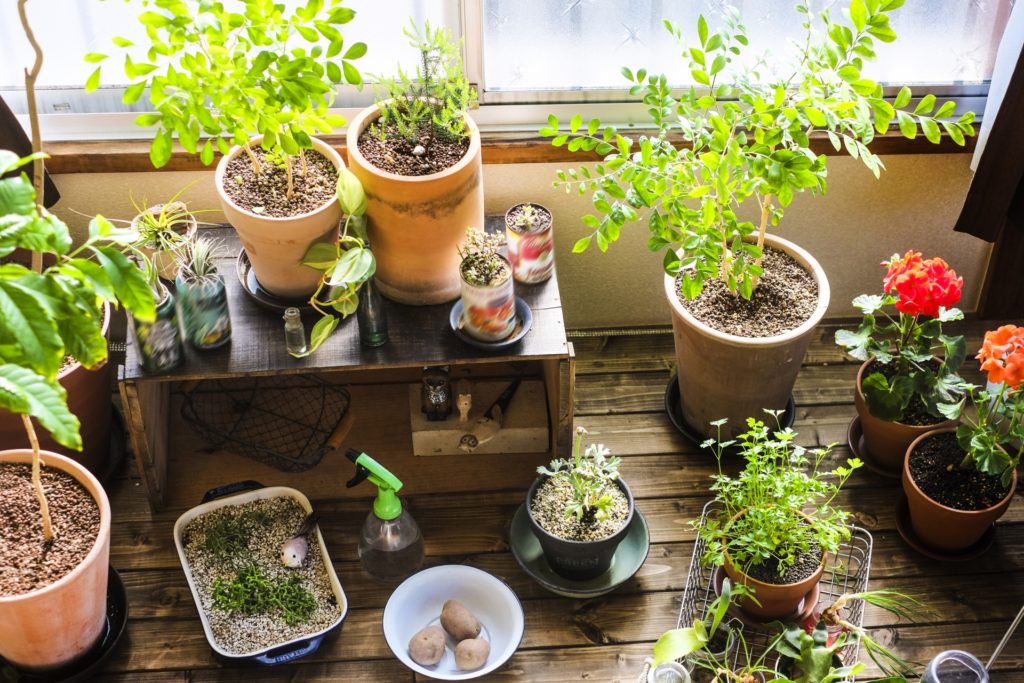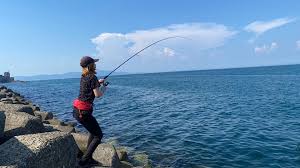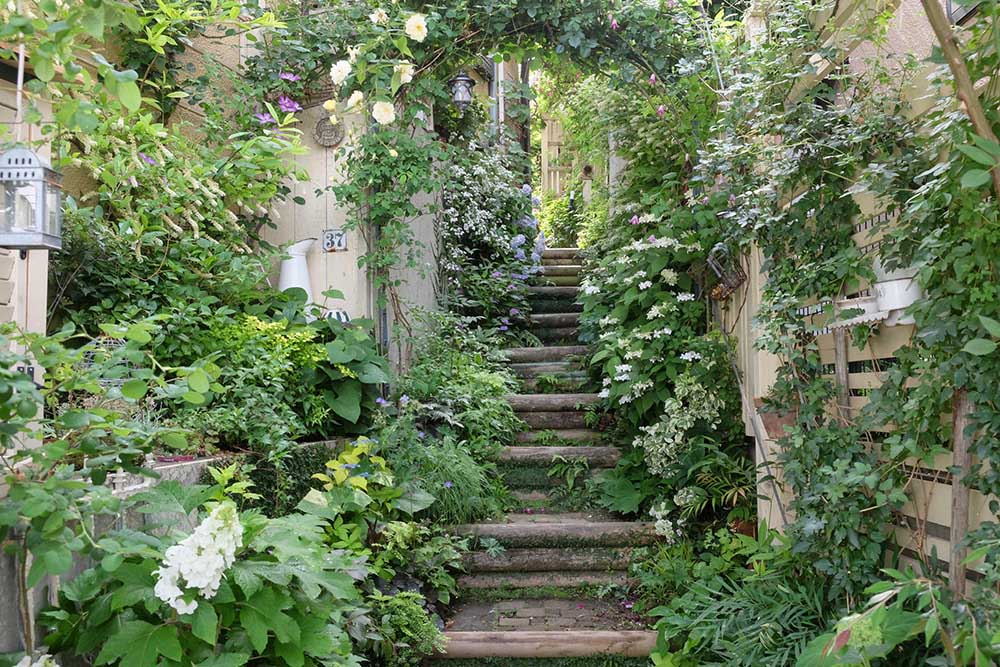
Planter gardening is a popular way to grow flowers even in limited space, and even beginners can easily get started.
In this article, we will introduce the appeal of growing flowers in planters and basic knowledge and tips to take the first step towards success.
Even if you don’t have a garden, why not add some color to your daily life with planter gardening, which you can start with just a balcony or a window?
Learn the basics of gardening and start a hobby that brings solace and joy to your daily life while growing beautiful flowers.
目次
- 1 Introduction to planter gardening: Basic knowledge that beginners should know
- 2 Flowers for planters recommended for beginners
- 3 Step-by-step guide to growing flowers in planters
- 4 Tips for making flowers bloom beautifully in planters
- 5 Even beginners can enjoy it! How to enjoy growing flowers in a planter
- 6 Frequently asked questions and gardening troubleshooting
- 6.1 Q1: Why do my plants wither?
- 6.2 Q2: The soil in my planter dries out quickly, what should I do?
- 6.3 Q3: It seems like my plants have pests. What are the measures?
- 6.4 Q4: Flowers are not blooming properly. What should I do?
- 6.5 Q5: I don’t know how to choose plants to grow in a planter. What should I do?
- 7 Planter Gardening: A Beginner’s Guide Summary
Introduction to planter gardening: Basic knowledge that beginners should know
Planter gardening is a fun hobby that can add color to your balcony or terrace, even if you have limited space.
The things that beginners need to know when starting planter gardening are how to choose an appropriate planter, knowledge of the necessary gardening tools, and how to choose flowers that are easy to grow.
In this section, we will explain the basic knowledge to get started with planter gardening.
Points to consider when choosing a planter
Planter selection is critical to gardening success. First, you need to choose a planter of the appropriate size and material according to the type and size of your plants.
Also, by choosing a planter with good drainage, you can prevent root rot and keep your plants healthy.
Also check to see if the planter has holes in the bottom or if you can drill them yourself.
necessary gardening tools
Before you start planter gardening, it’s important to have some basic gardening equipment.
You will need gardening gloves, a shovel, a hoe, a watering can, and fertilizer.
Armed with these basic tools, planter gardening will become much easier and more efficient.
Planter gardening is easy to start, even for beginners, and allows you to enjoy beautiful flowers even in limited space.
Learn how to choose the right planter and the tools you need, start with easy-to-grow flowers, and discover the joy of gardening.
Flowers for planters recommended for beginners
For those who are just starting out with planter gardening, it is very important to have a successful experience from the beginning.
To this end, it is recommended to choose flowers that are easy to grow and durable.
Here, we will introduce flowers for planters recommended for beginners, the secret to how easy they are to grow, and recommended flowers by color and season.
Types and characteristics of flowers that are easy to grow
- Marigold : Has disease-resistant and pest-repelling properties, and grows well with plenty of sunlight and moderate watering. Its bright yellow and orange flowers add vibrancy to the garden.
- Pansies : They are cold tolerant, making them ideal for the cooler seasons of spring and fall. With well-drained soil and regular watering, you can enjoy colorful flowers for a long time.
- Petunias : They come in a wide variety of colors and shapes and produce gorgeous blooms all summer long. Prefer a sunny location, and choose soil with good drainage to avoid excessive moisture.
- Geranium : A sun-loving plant that can grow in relatively dry environments. You can maintain good flowering by regularly removing dead flowers.
Recommended flowers by color and season
- Spring picks : pansies, violas, primulas. These flowers are well-suited to cool spring weather and add vibrant color to your garden.
- Summer picks : petunias, marigolds, geraniums. These flowers can withstand strong summer sun and bring rich color and life to your planter all summer long.
- Autumn recommendations : Snapdragons, chrysanthemums. As the weather cools down in the fall, these flowers add deep color and warmth to your fall garden.
These planter flowers recommended for beginners will bloom beautifully if they meet specific growing conditions, making gardening even more enjoyable.
By choosing colors and seasons, you can enjoy a garden full of variety throughout the year.
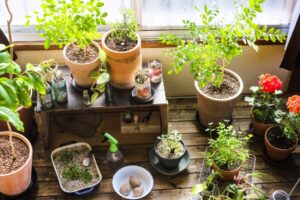
Step-by-step guide to growing flowers in planters
Growing flowers in planters is a great way to learn the basics of gardening and experience the beauty of nature up close.
Here we will explain the basic steps for growing flowers in a planter, from preparing the soil to sowing seeds, how to plant seedlings, and how to water and fertilize.
soil preparation
- Choose a planter : Choose a planter that has the right size and drainage holes for your chosen plants.
- Choose the right soil : Choose the right gardening soil for your plants. In general, soil with good drainage and water retention is recommended.
- Preparing the soil : Place some pebbles or pique stones in the bottom of the planter, then fill the planter 3/4 full with soil. This will help excess water drain away.
Sowing seeds and planting seedlings
- Sowing : When sowing seeds, follow the instructions on the package to sow at the appropriate depth and spacing. After sowing the seeds, cover them lightly with soil and water them.
- Planting the seedlings : To plant the seedlings, dig a hole in the planter and gently place the seedlings in, being careful not to damage the seedling’s root ball. Then, backfill the hole with soil, tamp it down slightly, and water.
watering
- Proper watering : Water when the soil surface is dry. Give plenty of water until the soil is thoroughly moistened, but care must be taken as poor drainage can cause root rot.
How to give fertilizer
- Fertilizer use : During the growing season, apply a diluted liquid fertilizer about once every two weeks along with watering. Depending on the type of plant, specific fertilizers may be recommended, so follow the instructions on the label.
Planter gardening can grow beautiful flowers by carefully following these steps.
Gardening in a planter will be even more enjoyable if you manage it according to the season and regularly observe the state of your plants.
Tips for making flowers bloom beautifully in planters
In order to keep flowers blooming beautifully with planter gardening, the keys are sunlight and moisture management, pest and disease control, and proper care methods.
By managing these elements in a well-balanced manner, it is possible to grow healthy and abundant flowers.
The importance of sunlight and moisture management
- Sunlight : Many flowers require plenty of sunlight. When choosing a location for your planter, consider the amount of sunlight your plants need and choose the best location. In general, some plants prefer direct sunlight, while others prefer partial shade, so adjust the environment accordingly.
- Water Management : Watering directly affects plant health. The basic rule is to give plenty of water when the surface of the soil is dry, but be careful not to overwater. Especially when growing in planters, be sure to check for good drainage and water properly to prevent root rot.
Pest and disease control and proper care methods
- Pest and disease control : Observe your plants regularly to keep an eye out for early signs of pests and diseases. If discovered, appropriate treatment will be provided immediately. Naturally friendly methods include using soapy water and neem oil.
- Proper care : After the plant has finished flowering, removing dead flowers (deflowering) will save the plant energy for producing the next flower. Also, by pruning the branches regularly, you can maintain the shape of the plant and improve air circulation.
By practicing these tips, you can keep the flowers you grow in your planters healthy and enjoy beautiful flowers every season.
Daily observation and proper care are the secrets to creating a beautiful planter garden.
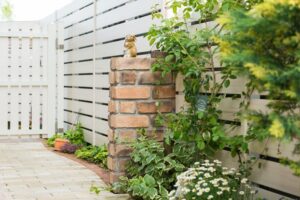
Even beginners can enjoy it! How to enjoy growing flowers in a planter
Planter gardening is a great hobby that allows you to enjoy seasonal flowers even if you have limited space.
Even beginners can easily get started, and by adjusting the layout and design of the planter, they can enjoy the joy of creating their own small garden.
How to enjoy flowers in each season
- Spring : Spring is the season when new life sprouts. Enjoy planting flowers that herald the coming of spring, such as pansies, primulas, and tulips, in planters. The brightly colored flowers shine in the warm spring sunlight.
- Summer : For summer, choose flowers that tolerate heat, such as petunias, marigolds, and geraniums. Bright flowers decorate the planter under the strong summer sun.
- Autumn : Autumn is characterized by muted colors of flowers such as snapdragons, dahlias, and cosmos. You can escape the summer heat and enjoy the depths of autumn while feeling the cool breeze in the planter garden.
- Winter : Choose flowers that can be enjoyed even in winter, especially pansies or violas, which are resistant to the cold. Even in the cold season, looking at colorful flowers will warm your heart.
Planter layout and design ideas
- Take advantage of height differences : By using planters of different heights, you can create a garden with depth. Incorporating wall-mounted or hanging planters is also a great way to make the most of your space.
- Play with color and shape : Create a visually pleasing planter garden by combining colorful flowers and plants with unique leaf shapes. By paying attention to the contrast of colors and shapes, you can create a more attractive layout.
- Change with the seasons : By changing out the plants in your planters each season, you can enjoy a varied garden throughout the year. We also recommend adding small items to the planter to create a seasonal feel.
Growing flowers in a planter is a hobby that allows you to express your creativity and experience the beauty of nature in each season.
Even if you are a beginner, why not start gardening with planters by referring to these fun ways and ideas?
Why not add some color to your daily life with your own small garden?
Frequently asked questions and gardening troubleshooting
In Q&A format, we introduce common problems and solutions that beginners who are just getting started with planter gardening may face.
By knowing these countermeasures, you will be able to lead a more enjoyable and successful gardening life.
Q1: Why do my plants wither?
A1 : There can be several reasons why a plant dies, but the most common is watering problems. Plants die due to overwatering or underwatering. Check the appropriate amount and frequency of watering depending on the type of plant. It may also be due to unsuitable sunlight conditions or over-fertilization.
Q2: The soil in my planter dries out quickly, what should I do?
A2 : If the soil dries out quickly, we recommend incorporating a water retention agent to increase its water retention capacity. Using materials like peat moss and coconut fiber can help retain moisture for longer. It is also effective to cover the surface of the planter with mulch material.
Q3: It seems like my plants have pests. What are the measures?
A3 : Prevention is important when it comes to pests, but if they do occur, you need to deal with them promptly. Mild cases can be washed off with a soapy water spray. For more severe pest infestations, consider using appropriate organic pesticides. There are also natural methods that utilize natural enemies.
Q4: Flowers are not blooming properly. What should I do?
A4 : The main reasons for not blooming are lack of sunlight, lack of fertilizer, or too much fertilizer. Make sure your plants receive enough light and use appropriate fertilizers, especially fertilizers that are high in phosphorous to encourage flowering. It is also effective to regularly remove dead flowers to conserve energy for new flowers to bloom.
Q5: I don’t know how to choose plants to grow in a planter. What should I do?
A5 : When choosing plants to grow in a planter, it is important to choose a type that is easy to grow and that suits the environment in which you live (amount of sunlight, temperature, etc.). For beginners, try hardy, easy-care flowers like marigolds, pansies, and petunias. You may also want to ask your local garden center for advice.
Use these Q&As as a reference to understand solutions to common planter gardening problems and enjoy a more fulfilling gardening life.
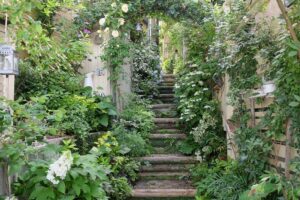
Planter Gardening: A Beginner’s Guide Summary
Planter gardening is a great hobby that allows you to enjoy the joy of growing flowers and plants even where space is limited.
Through this guide, you’ll learn how even a beginner can make flowers bloom beautifully in a planter, how to enjoy each season, and even common problems you might encounter and their solutions.
From choosing a planter to preparing the soil, sowing seeds and planting, to watering and fertilizing, mastering the basic steps is the key to success.
Countermeasures against pests and diseases, and proper care methods are also important points. You can also enjoy creating your own small garden by adjusting the layout and design of the planter.
By choosing different flowers for each season, you can enjoy changes in your gardening throughout the year.
Finally, the FAQ and Troubleshooting section provided specific solutions to problems that beginners may encounter.
Armed with this knowledge, even beginner gardeners will be able to get started with confidence.
Planter gardening is a process of trial and error. It is important to try different methods without fear of failure.
Enjoy each step and fully enjoy the charm of planter gardening.
Checklist for starting to grow flowers in planters
Before you get started with planter gardening, here’s a checklist of important steps to smooth your path to success.
Use this list as a reference to get ready for flower growing.
-
clarify your purpose
- Think about what you are aiming for, such as the type of flowers, their color, and how they look in each season.
-
Choosing a planter
- Choose a planter of the appropriate size and material according to the type and size of the flowers you want to plant.
- Check to see if there are drainage holes.
-
Choosing the right soil
- Prepare soil suitable for the type of flower (e.g. gardening soil, soil rich in organic matter, etc.).
-
Preparing the necessary gardening tools
- Gather things like a shovel, gardening gloves, watering can, and planter tray.
-
Flower selection
- Choose flowers that are easy to grow for beginners and that are suitable for the season.
-
Check sunlight conditions
- Make sure the location where you place the planter has sunlight conditions suitable for the flowers you choose.
-
watering plan
- Check how dry the soil is and consider the appropriate watering frequency.
-
learn about fertilizers
- Understand the types of fertilizers and how to apply them, and prepare as necessary.
-
Prevention and countermeasures against pests and diseases
- Research precautions against pests and diseases in advance and prepare supplies if necessary.
-
Plan regular maintenance
- Plan for pruning and repotting as your plants grow.
By using this checklist to prepare, you’ll be able to enjoy growing flowers in planters and get better results.
Gardening is a continuous learning process, so with each experience you gain new discoveries and improvements. Preparation before you start is the first step to success.
